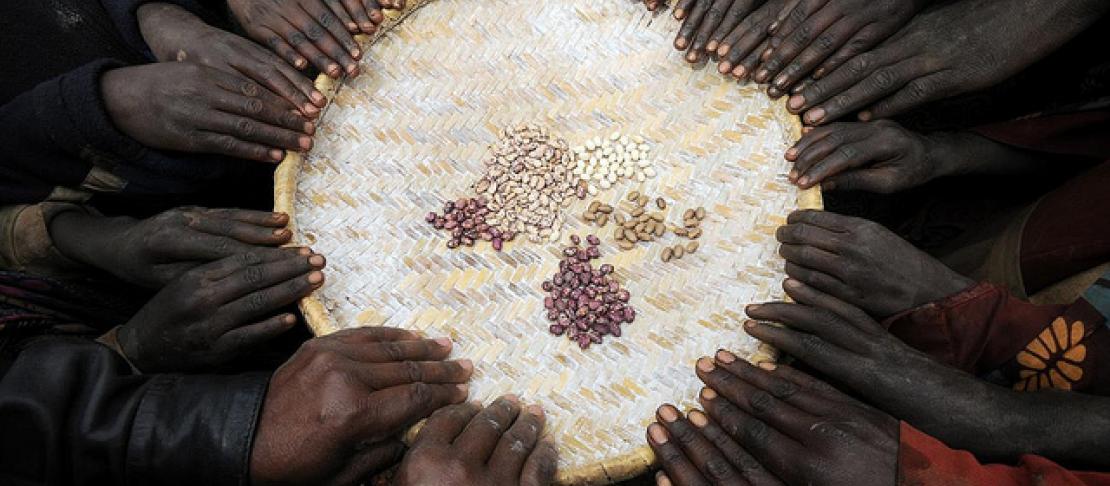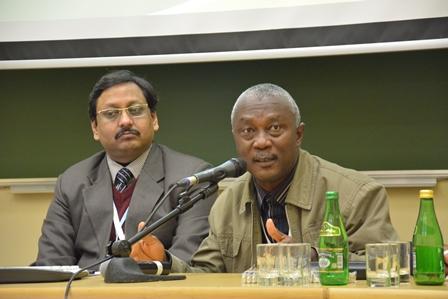Combined solutions to strengthen adaptation

Many countries have already developed multiple adaptation policies. However, the linkages between them aren't always clear. When taken as a package, they can appear incoherent and even contradictory. Integrated adaptation assessments and action plans can help overcome the barrier of cross-sectoral coordination, and was the focus of one of CCAFS key sessions at Global Landscapes Forum (GLF).
The session, called ‘National Adaptation Plans (NAPs): Opportunities for cross-sector synergies in the nexus between water, food security, forests and energy?’ focused on the connections between climate adaptation and landscapes, exploring how countries can overcome landscape complexity, build the necessary partnerships, and refine knowledge systems - all through national adaptation planning.
The NAP process was established in the Cancun Adaptation Framework at COP 16 to help facilitate medium- and long-term adaptation planning and implementation. This session was dedicated to sharing experiences of countries already engaged in the process.
The Akropong Approach
Effectively addressing the nexus of food security, water, forest and energy within a landscapes context requires effective planning, like Ghana's National Climate Change strategy, known as the “Akropong Approach” after the town in which it was developed and used.
In the GLF session, Kofi Delali Nutsukpo, from the Ministry of Food and Agriculture in Ghana, shared Ghana's experience. They emphasized the importance of involving multiple stakeholders at all stages of the process, to ensure that the interests of all sectors were represented.
The integration of multiple sectors into adaptation planning can be challenging, but a solution which only tackles different sectors in isolation will likely end up with incoherent policies, due to their conflicting interests.
Mr Nutsukpo had some hard-hitting practical advice for countries starting out in the process:
First of all, a country that wants to start a NAP process must invest in the studies needed to create the background knowledge necessary to take action. You need to know where your country is at. Second, you need to build capacity for people to engage with the process and for technical assistants to facilitate the process. Ghana was fortunate enough to have support from the The Netherlands for technical assistance to facilitate the process.

“The goal of a climate change policy is a development through a local group approach”. States Mr. Nutsukpo. photo: j.l.urrea (CCAFS)
According the Akropong experience, NAPs must identify synergies between the different sectors - including the economy, agriculture, forestry, energy, and water sectors, in the framework of a landscapes approach. If the institutions don't do that, there will be too many uneven trade-offs, too many gains and losses in different sectors.
The reviews of Ghana's progress in NAP processes which were made in this session, and also the experiences of other countries, are very useful for other countries who are just starting the NAP process, by identifying the challenges they may face and what help they might need.
The Guatemalan connection
And this wasn't the only opportunity for delegates to learn during COP19. In total, the CGIAR Research Program on Climate Change, Agriculture and Food Security (CCAFS) organized three sessions on national adaptation planning.
The first was a NAP Workshop, held on November 13-14. The main conclusion there was that countries can (and want to) learn from the experiences of others, and to get NAP process up and running in their own countries.
Since CCAFS started to work in Latin America this year, its goal has been to support countries to accomplish their own plans; which is why CCAFS was invited Guatemala was invited to join this event.
Both Guatemalan delegates expressed an eagerness to roll up their sleeves and get started, but also warned that they, and other Latin American nations need support to advance.
View more photos from the NAP Workshop:
Learn more:
- BLOG: The serious business of NAP-ing
- REPORT: Planning climate adaptation in agriculture (CCAFS Report No. 10)
- BLOG: Tackling climate change: Kenya holds first national planning meeting for agriculture
- BLOG: Agriculture in focus: Climate change planning in Kenya
- BLOG: With proper planning, farmers can thrive in a world of shifting climates
José Urrea is the Communications Officer for CCAFS Latin America. Lucy Holt works with communications for the CCAFS Coordinating Unit.
The CCAFS team is reporting live from the UNFCCC climate talks in Warsaw, 11-22 November 2013. Click to read all of our coverage. For live updates from the Climate talks in Warsaw, follow us on twitter @cgiarclimate and @bcampbell_CGIAR. Join the conversation using #GLFCOP19.
